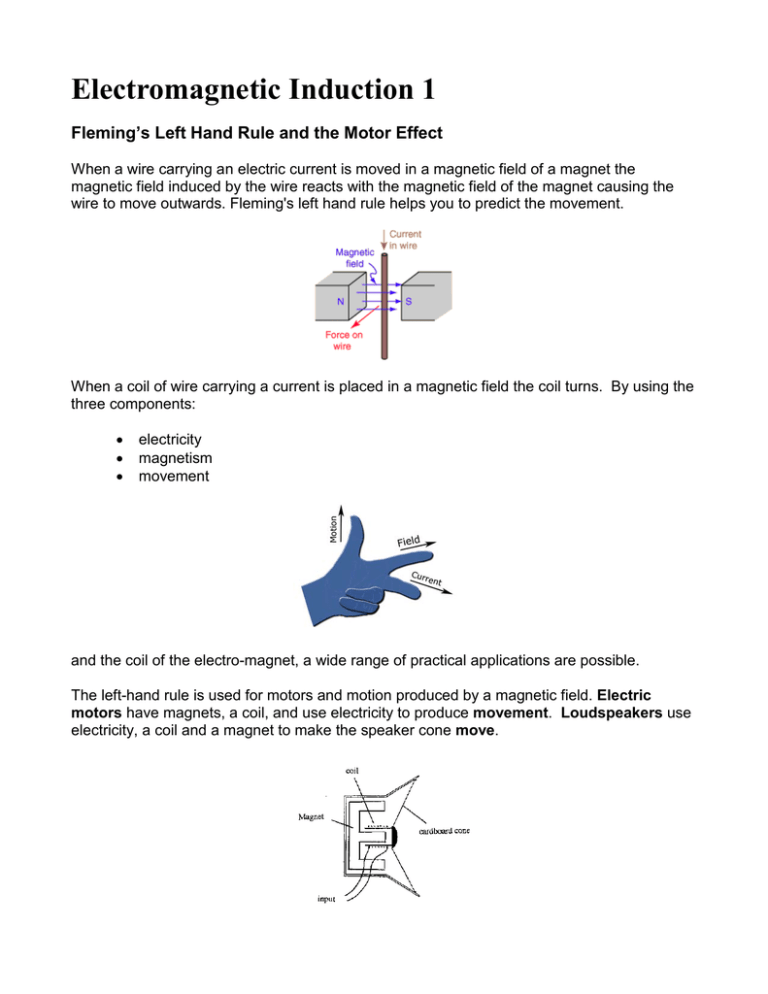Electromagnetic Induction
advertisement

Electromagnetic Induction 1 Fleming’s Left Hand Rule and the Motor Effect When a wire carrying an electric current is moved in a magnetic field of a magnet the magnetic field induced by the wire reacts with the magnetic field of the magnet causing the wire to move outwards. Fleming's left hand rule helps you to predict the movement. When a coil of wire carrying a current is placed in a magnetic field the coil turns. By using the three components: • • • electricity magnetism movement and the coil of the electro-magnet, a wide range of practical applications are possible. The left-hand rule is used for motors and motion produced by a magnetic field. Electric motors have magnets, a coil, and use electricity to produce movement. Loudspeakers use electricity, a coil and a magnet to make the speaker cone move. Microphones can work in the opposite way using movement caused by sound waves together with a coil and magnet to produce electricity - which then travels along a wire, usually via an amplifier. Movement/Force on a current flowing through a magnetic field A force is produced which is perpendicular to both the magnetic field direction and the direction of current flow. The size of the force depends on the size of the current, the length of conductor within the magnetic field and the strength of the magnetic field itself. Where F force on conductor (N), B = magnetic field strength (T), I = current in conductor (A) and L = length of conductor in magnetic field (m) A current flowing parallel to a magnetic field experiences no force. The formula has been generalised, noting that the force is zero when the angle is zero and the force is a maximum when the angle is 90°. When current flows around a rectangular loop placed in a magnetic field, forces in opposite directions can be produced on two sides of the loop. This pair of forces will tend to rotate the loop. Force on a charged particle moving in a magnetic field If charges are not constrained to move within a wire, or other conductor, then the force on the charge as it passes through a magnetic field will change its direction of travel. As the force is perpendicular to the velocity (current direction) it alters the direction, but not the speed, of the particle. Fleming’s Left Hand Rule can be used to find the direction of this force, remembering that the rule is applied to conventional current which is assumed to be made of positive charges. If the moving charges are negative, for example electrons, treat them as a current going in the opposite direction. The diagram below shows how alpha, beta and gamma radiation would be deflected by a magnetic field acting perpendicular to the path of the particles. In the diagram the magnetic field acts into the plane of the paper. Alpha particles are deflected a little because of their large mass while beta particles are deflected much more because they are nearly eight thousand times lighter and only twice the charge. They have a negative charge while alpha particles are positive and so they are deflected in the opposite direction. Notice that the gamma rays are not deflected at all – this is because they have no charge.


